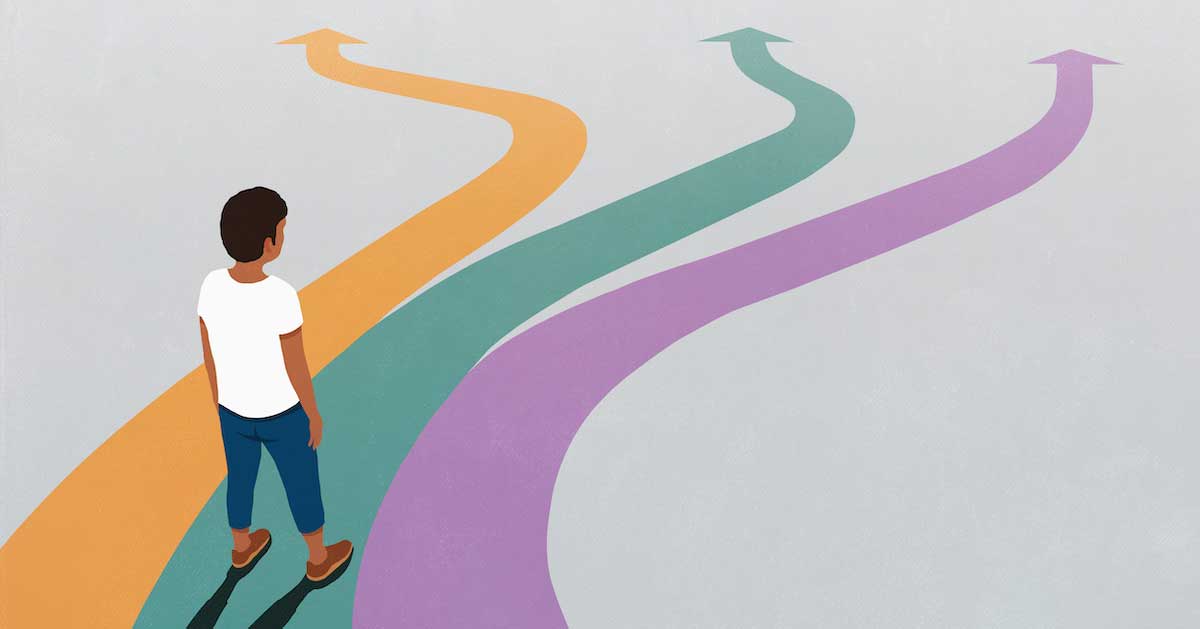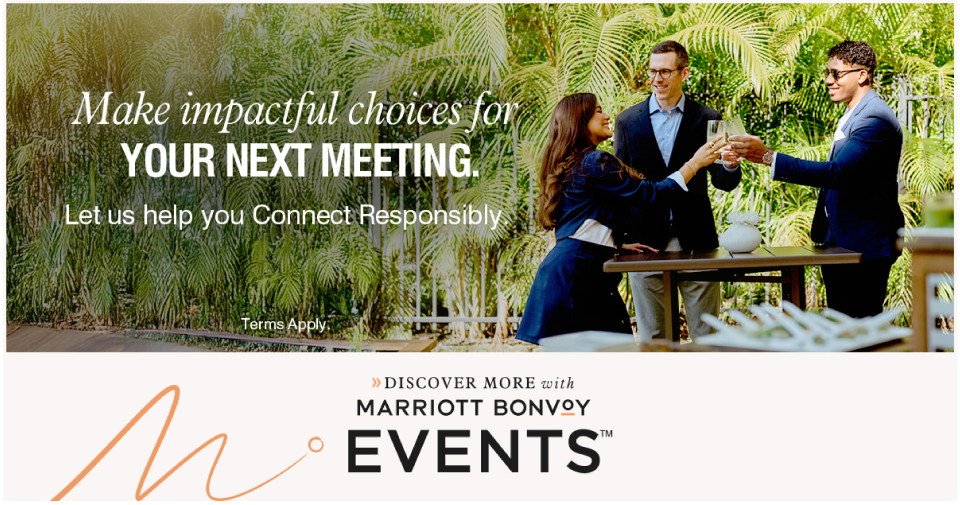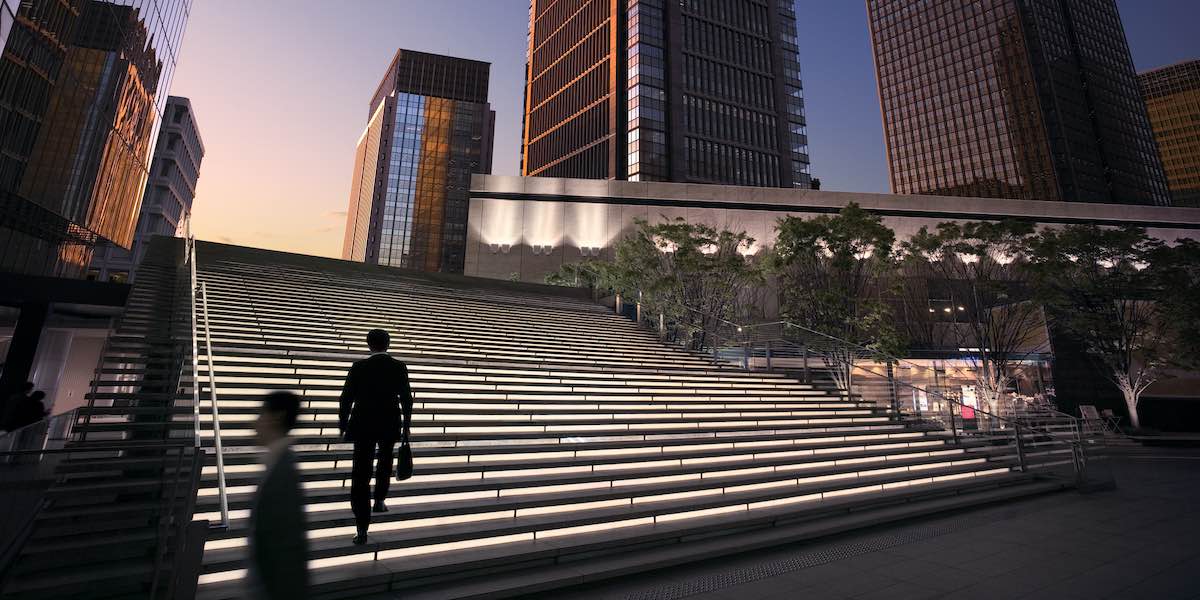Continuing on from some of the coverage in the January issue of The Meeting Professional, sponsored by Caesars Entertainment, the following insight provided by a diverse cross-section of meeting professionals should help you start the new year with a wellness- and well-being-focus to position you and your colleagues for a successful 2024!
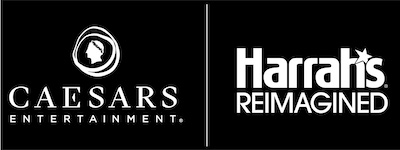
Are there specific types of wellness elements that you’d like to see utilized more at meetings and events? If so, what are they and why do you think they’d be beneficial?
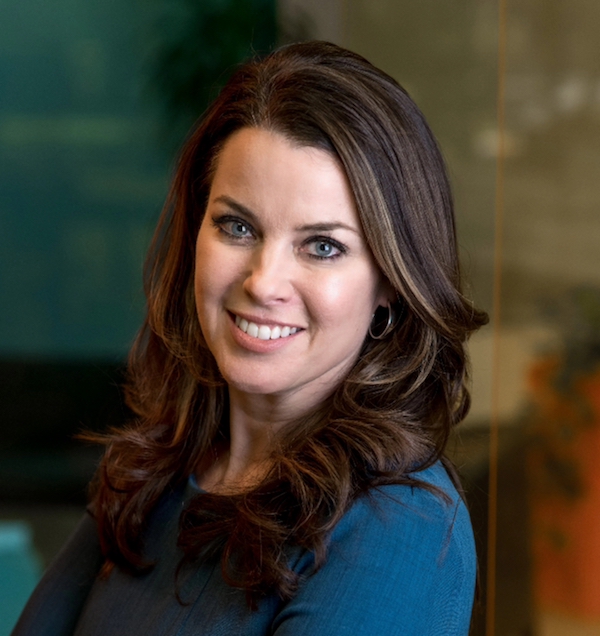
Kim Kopetz, President and COO, Opus Group
I’d love to see more wellness elements incorporated into the event to improve attendee experience and cater to more nuanced demographics. The ideas listed below are a few ways to utilize wellness tactics that respond to cultural narratives and make all attendees feel more engaged and included.
Neurodivergent design. Low-stimulation experiences/quiet rooms, subtitles, considering different learning styles and ability to select level of participation. A significant percentage of the population are considered neurodiverse in some way and providing a variety of accommodation options for all kinds of neurodivergence will ensure that attendees’ needs are getting met.
Mocktails/more creative non-alcoholic beverage options. There has been a significant rise in the popularity of mocktails and non-alcoholic beverage options, as more people (especially the younger generations) choose to ditch alcohol. At a typical event, there are usually lackluster choices for those who are not drinking alcohol, and specialty mocktails and more exciting beverages is an opportunity to improve attendee experiences and make dry attendees feel more comfortable.
Accurate voiceover captioning in keynotes. Accessibility is wellness and the use of closed captioning is wildly popular with all demographics. It makes the experience easier to follow along, increases accessibility and reinforces content for attendees that have had to absorb a lot of information throughout an event.
Increased wayfinding. Introducing innovative ways of wayfinding, such as using AR in event apps to guide attendees through the space provides a personalized experience while accommodating attendee needs and improving experience overall.
Amanda Armstrong, SVP, Communications and Industry Relations, Encore
When planning the location of quiet rooms, consider keeping them close to the action for easier accessibility. If these spaces are hard to find, you may see lower utilization rates by isolating participants and unintentionally segregating them. IMEX America built their quiet room on the trade show floor—great event design!
Continue to record content and give attendees access to sessions after the event. Why? It reduces pressure to attend all sessions and participants can balance wellness at events. If there are competing sessions, attendees don’t have to choose, which reduces stress and adds value to their experience. It’s also an inclusive event design practice to offer education online for attendees unable to join physically or neurodivergent attendees who may learn more effectively in an online environment. Recorded sessions increase message retention and can lead to faster behavioral change when organizations use them as evergreen content.
Jessie States, CMP, CMM, Vice President, MPI Academy
It’s exciting to see organizations leaning into different elements of wellness in the event space. MPI is proud to support efforts like the Neu Project to support participants with neurodiversity and bureaus like Damon Brooks that represent speakers with a disability. Financial wellness is not often discussed, but how are events leaning into creating opportunities for participants to not have access to experiences but also to learn, grow and enhance their own financial prospects and futures.
Karina Anthony, CDME, Senior Director of Marketing, Visit Atlantic City
I’d like to see more open-minded thinking go into meeting and event designs. Wellness is about the mind-body connection, and it would be beneficial to attendees to see the utilization of free-flowing event space with different layouts so attendees can spread out and enjoy sessions and meetings in a comfortable environment in addition to traditional settings. An added benefit would be incorporating wellness breaks with healthy food and beverage options. Planners can also take different personality styles into consideration—such as introverts and extroverts—when it comes to designing sessions. We work in a fast-paced environment with tight deadlines and many moving parts, so involving executive leadership in projecting the message of emotional and physical wellness could make attendees, show managers and salespeople alike feel more at ease.

Pandit Dasa, Speaker and author, Work Mindful Corp.
During my breakout sessions and even some keynotes, I divide the audience into small groups and engage the participants in discussing two or three of the following questions:
- What are you currently doing in terms of self-care?
- What are you doing for your mental health?
- What can you do more of?
- How many hours of sleep do you get?
- How do you prepare yourself to get a good night sleep?
- What is the first thing you do when you wake up to start your day off right?
- What do you do to develop positive social connections at work?
These discussions become so vibrant that I have a hard time getting them to stop talking. This is a great sign because it shows that there is a hunger and thirst to talk about wellness. Since mental health is unfortunately a bit stigmatized, people open up and talk about it more freely because they are being encouraged to talk about it and are being provided an opportunity, in a safe space, to discuss this very sensitive yet important topic.
How often do we even get an opportunity to sit with someone and talk about our mental, emotional and physical well-being? Definitely not often enough. I think we need to create time in meetings where people can sit together and discuss this incredibly important topic. Having open discussion is the only way to begin to remove the stigmatization from the topic of mental wellness.
Incorporating and facilitating this type of discussion, centered around wellness, is very engaging, allows participants to get to know each other and breaks the pattern of sitting and listening to one speech after another. I think this can be a very important component to incorporate into meetings. It demonstrates that the organizers are cognizant of and are placing importance on wellness.
Jessica Campos, CMP, Chief Experience Officer, Wicked Experience Design
I would love to see more dedicated health and wellness “zones” at meetings and events. These areas could offer attendees access to anything from infused water stations and oxygen bars to meditation corners and workshops covering topics that attendees can incorporate into their daily lives. I personally think these spaces act as sanctuaries within an event, providing a comprehensive rejuvenation experience for both the mind and body. The combination of relaxation and revitalization offered in these dedicated zones leaves a lasting and positive impression, contributing significantly to the overall satisfaction and well-being of attendees at the event and beyond.
Carina Bauer, CEO, IMEX Group
Personalized wellness options. Through our work with Storycraft Lab and their Experience Profiles quiz last year, we were able to offer attendees personalized trail guides and recommendations of show activity based on each attendees’ own needs and preferred learning styles. This enabled us to highlight our wellbeing offering as well as education sessions and activations across the show floor that were relevant to them.
Quiet spaces. Recharging points for attendees are a huge asset. Large events can be overwhelming, especially for neurodiverse people. At IMEX America this year, Google Xi provided a Resilience Room, presented in partnership with The Neu Project and Marriott International and designed by partners Storycraft Lab. This space, off the show floor, was designed to foster the physical, emotional and mental well-being of attendees, providing tools and resources to manage fatigue, overwhelm and sensory needs. Feedback from the Google XI team showed that people used it for a wide range of reasons: those with neurodiverse needs made repeated use of the space, other people popped in for a one-off time-out moment. We also introduced a Quiet Space alongside the Resilience Room for anyone in need of a quiet place to sit, rest and reset.
Mozelle Goodwin, CMP, HMCC, MMP, Principal, Goodwin Consulting
Food and beverage. I like to look at what I must provide and try to incorporate wellness. We have to feed our audience, so ensuring there are enough healthy options is a must, especially since I focus on medical meetings. Oftentimes, I try to provide options that align with the meeting therapeutic area—low fat, low carb for cardiovascular; low sugar for diabetes; and so on. Breakfast can be more difficult, but it is possible to provide a healthy breakfast with a reduction in fat, salt and sugar by working with the chef for locally grown items to create a vegetarian meal and then looking at where a meat or fish protein can fit in. We usually look at the main entree first to drive the side dishes.
Breaks. I’d like to see shorter agenda topics (or split Part I and Part II) to provide more breaks for shorter periods of time. Hotels now have very good healthy menu options for meals and breaks not loaded with sugar and salt, but you can go a step further by having a yoga instructor provide five-minute stretch sessions throughout the day, to include chair yoga and relaxation breathing. Studies reveal that the rhythm of our breathing can influence neural activity, impacting cognitive functions such as emotional processing and memory recall. Whenever possible, I like to book my meal rooms a short walking distance from the meeting room. Most groups want all of their meeting space together, but it makes for a lethargic audience because they are not really moving much. If the weather is nice, I prefer to have meals and/or breaks outdoors. If the weather is not cooperating, open the curtains during the breaks to let some sunshine in and still provide access to the outside for those who just want to get a breath of fresh air even if the temperature is below 40 degrees.
Providing wellness at a meeting doesn’t have to be a budget buster. It doesn’t have to cost anything at all. Most of us have a relaxation app on our device. This same app can be projected on the screen at your meeting for a short breathing exercise to keep your audience engaged and focused. Sometimes the “baby” steps are the best steps. It is counterproductive to stress out, when trying to relieve stress!
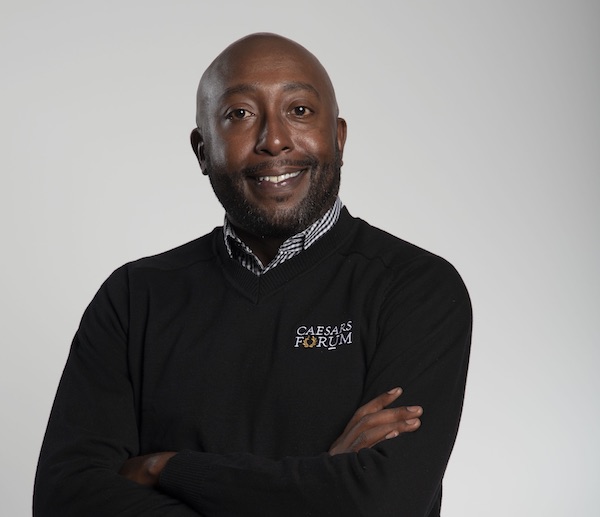
Derrod McKinney, Director of Catering and Convention Services, CAESARS FORUM
I would like to see more planners consider wellness when planning their conferences, period. Attendees really appreciate it. This is a great way to create more engagement and networking opportunities. Even a small activation can make a difference and something attendees will remember.
Annette Gregg, CMM, MBA, CEO, SITE
To ignite the right brain, I’d love to see more creative hands-on activities. Using our creative brain benefits our physical and mental wellness. I’d also like to see more walking sessions and networking activities. Walking together not only improves physical health but helps us learn and bond better.
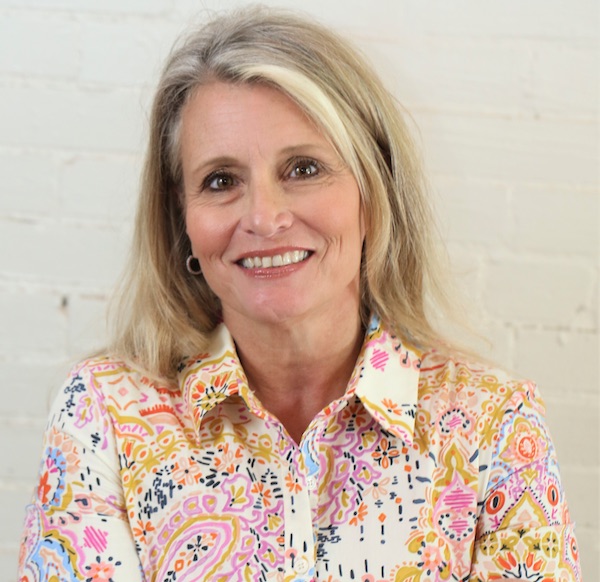
Rachael Riggs, GM, Environmental Strategy, Maritz
One thing I really want to start exploring in the next year is the power of natural scent. We have a partner that we are looking at for this education…Young Living Essential Oils. Research shows some powerful correlation between natural scent and memory recall. Wouldn’t that be amazing if we used all our senses to help us learn and grow?
Lisa Messina, Chief Sales Officer, Las Vegas Convention and Visitors Authority
If time does not allow for group fitness events or longer break periods for an attendee to re-charge, an easy way that organizers can support wellness is to think about the swag bag or amenity program at their event. It doesn’t have to be costly but consider adding elements of wellness into [the giveaways] such as healthy snacks, bottled water, lavender spritzers and eye masks and ear plugs for better sleep after a long day. You can also set breathing and meditation notifications through your event mobile app to remind attendees to take time for themselves.



